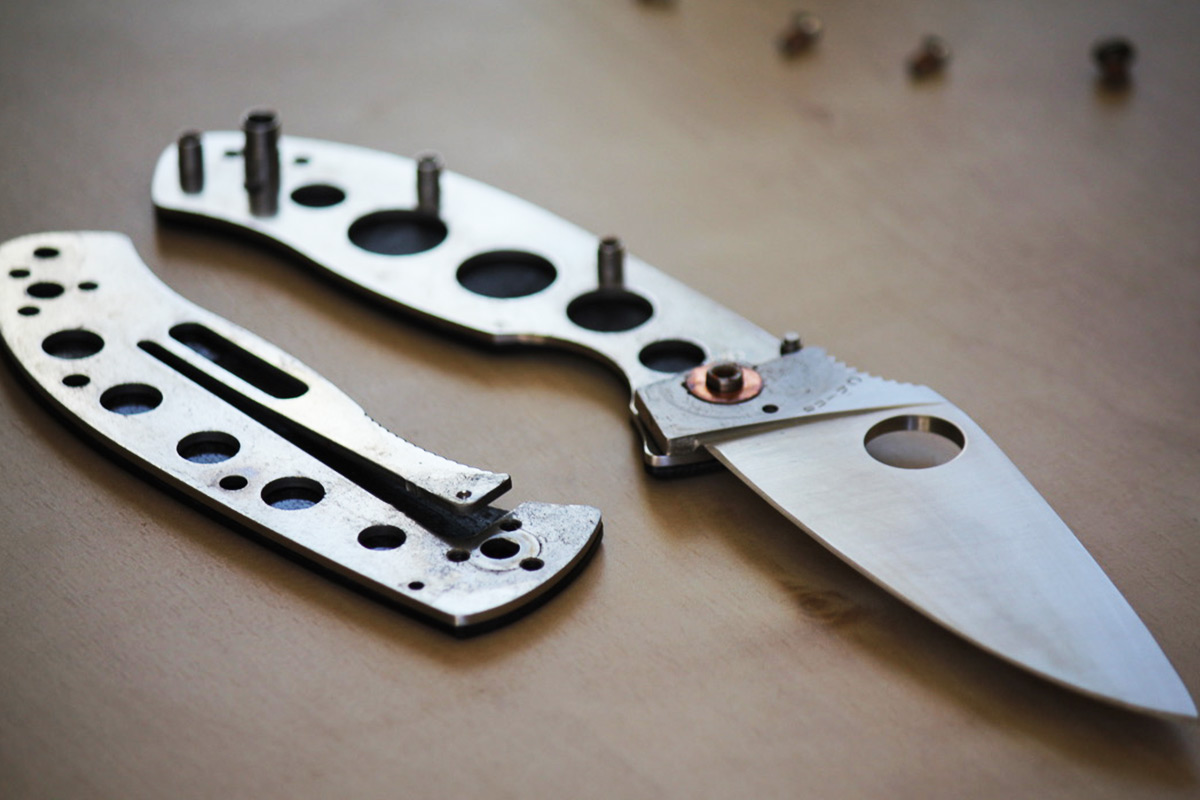
I love cleaning around the house. Maybe that makes me a bit odd, but it provides much needed time to unwind, zone out, reflect on your life, or listen to great knife podcasts.
What’s even better than cleaning the house is cleaning a pocket knife.
But how do you actually do a good job cleaning a knife?
I made sure not to clean my Spyderco Tenacious (which I use constantly around the house) for a while so I could write this post for you.
To Disassemble a Knife or Not
The first thing you have to consider is whether to fully disassemble the knife or simply clean the blade and take care of the pivot from the outside.
Here are some thoughts on that. If you want to do a thorough job or you haven’t cleaned the inside for a while, you should take the whole thing apart. Depending on the knife, it won’t take up too much time and gets the knife back to tip-top condition.
However, if you’ve cleaned the inside recently or feel only the blade is dirty, you can skip the disassembly.
Cleaning the Blade

There are many different ways to go about cleaning a blade. Most knife enthusiasts have their own recipes or preferences.
If the blade is rusty, I recommend reading our post on how to get rust off your blade.
If there is tape residue, I recommend reading our post on how to get tape residue off your blade.
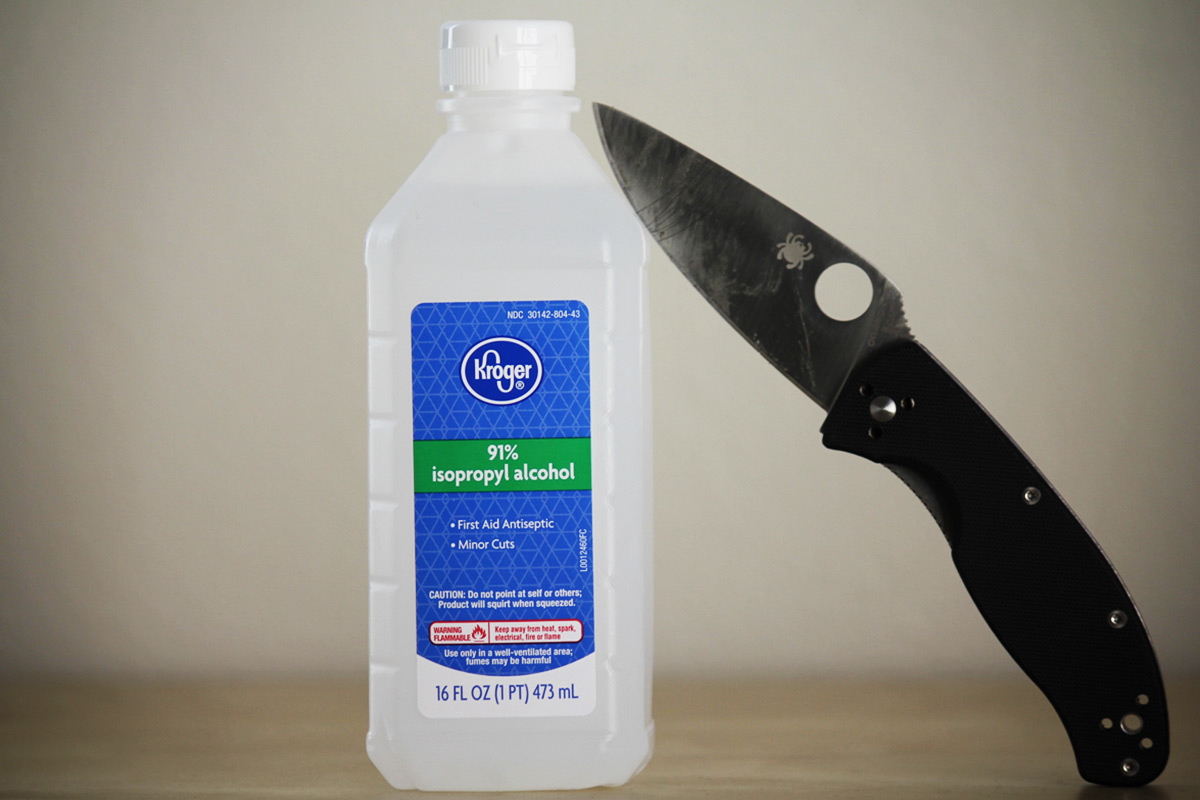
More recently, I’ve been using 91 percent rubbing alcohol to clean off the blade because it’s safe to use on food, gets the job done well, and evaporates quickly.
I bought some cotton cloths, dab a little alcohol on them, and clean away the gunk. I got the cloths at a dollar store, but you might want to get some better quality cloths to avoid the white strands from coming off on your knife.
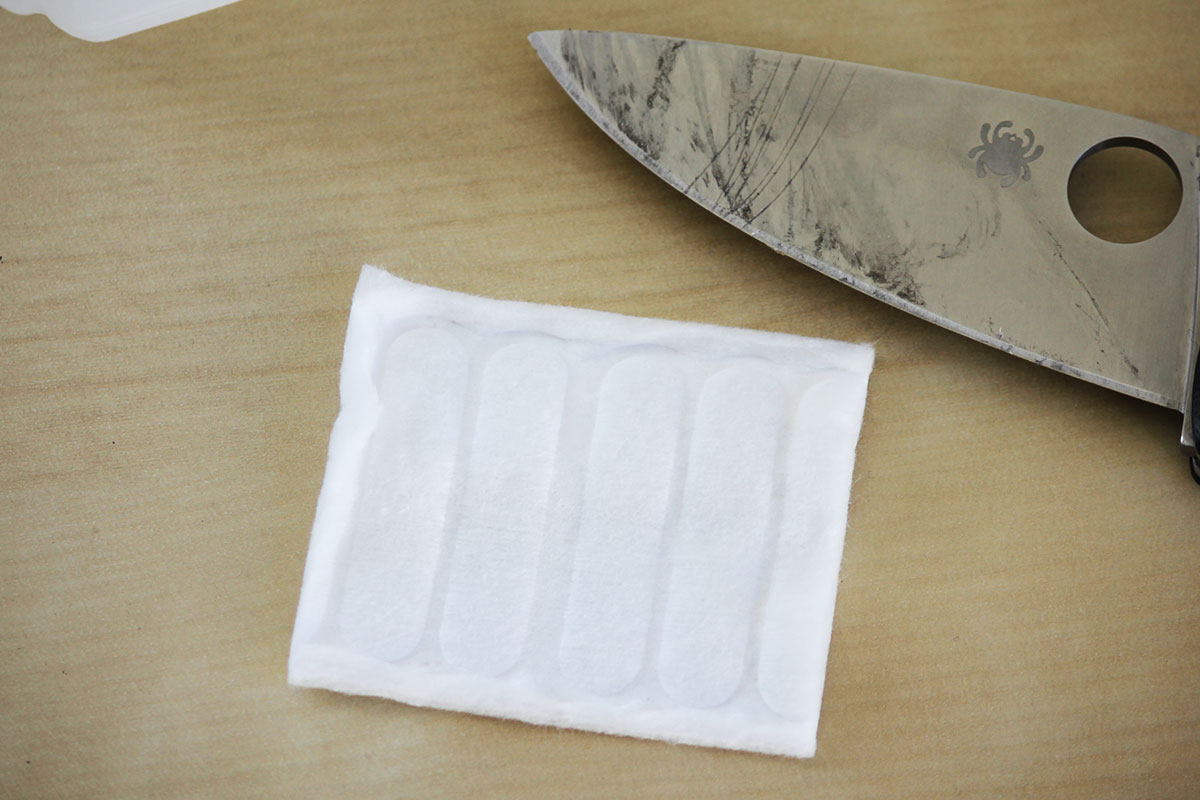
Getting the dirt and grime off the blade is as easy as that.
Cleaning the Pivot without Disassembly
If you opt to clean the knife without taking it apart, you should still try to clean the pivot, which is just as important. A clean pivot will ensure the knife opens and closes the way it’s supposed to — smoothly and safely.
There are a few ways you can do it. For example, you can use compress air to get some of the dust out.
However, one of the easiest and best ways to clean the pivot without disassembly is by using some Knife Pivot Lube aka KPL.
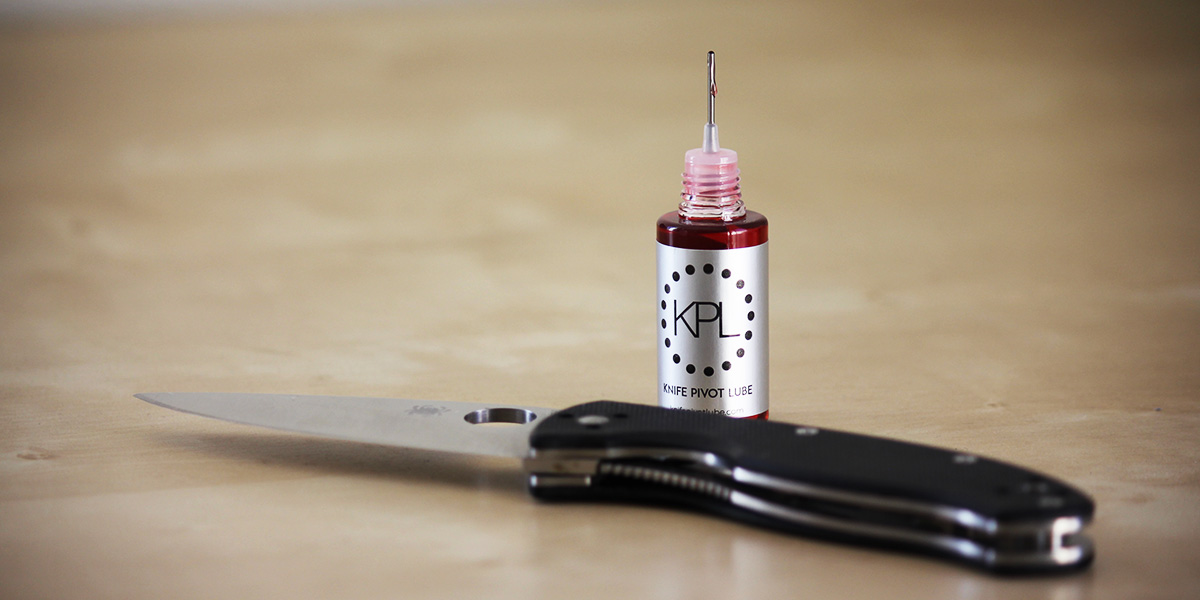
KPL is a relatively new oil on the market but has taken the knife community by storm. For $10, you can get a 10ml bottle of the oil.
What you do is apply it around the pivot and let it seep in. Then, the lube does the work of cleaning the pivot as you open and close the knife. It works surprisingly well too. I put it in a gritty knife that opened poorly. After using the knife a few times, the grit was gone and the smoothness returned. That’s all without opening it too.
I highly recommend it.
Cleaning the Inside of the Knife
When you want to be thorough, you have to take the knife apart.
With the Tenacious, I used a torx driver to unscrew the scales. I have an adequate Husky set but I recommend getting something a bit better like a Wiha set. If you can’t get the knife apart, check out our guide on how to remove a stuck or stripped screw.
A good tip to remember when taking apart the knife is to put all the pieces back exactly where you took them out. For example, don’t put a screw back in a different location and don’t put a washer on the wrong side. Make sure everything is organized while you’re taking it apart.
Once inside, you can start getting to work. Yikes, this Tenacious was pretty bad.
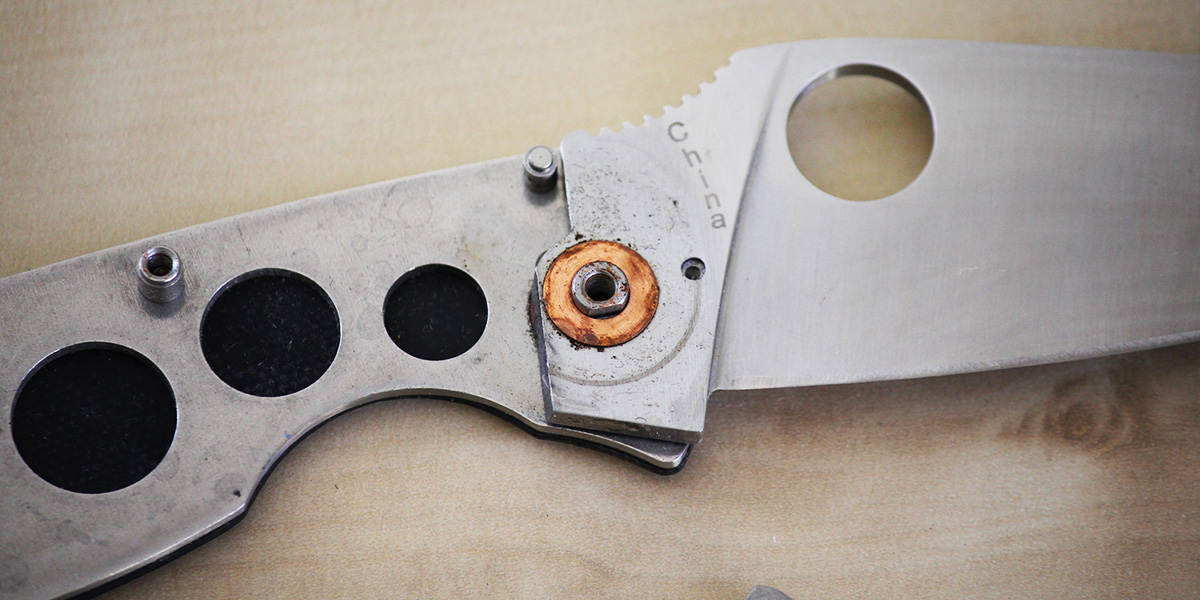
I put some rubbing alcohol on the cotton squares and gave the scales a good rub down. I also used a good ol’ fashioned Q tip to get into those tough spots. You can take the scales off on the other side if you are so inclined.
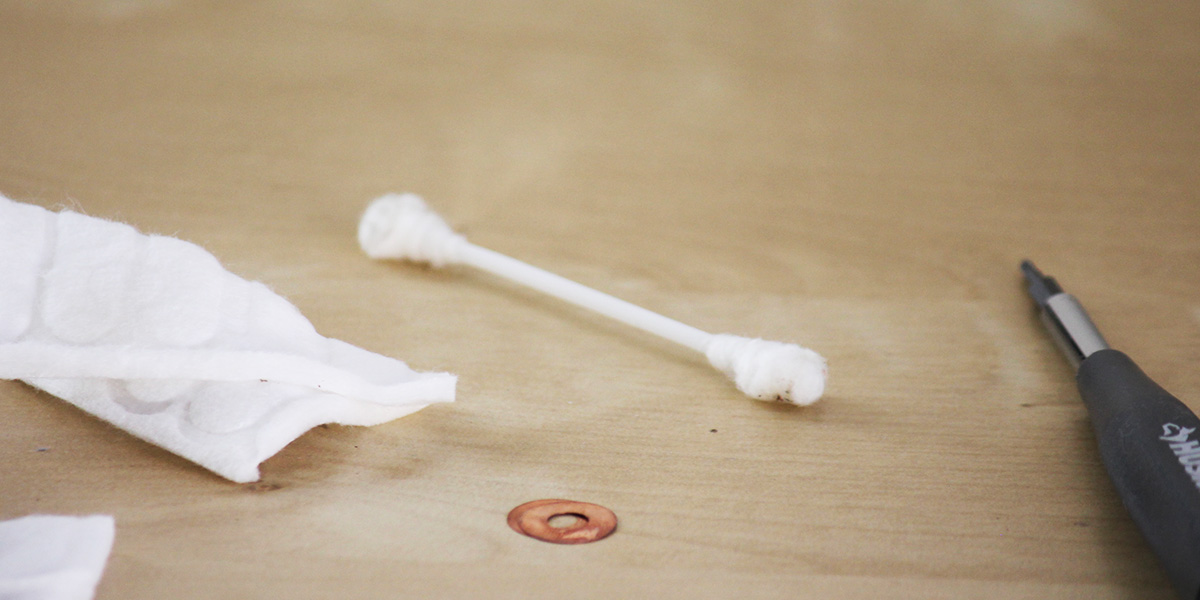
Cleaning the washers is equally important. Gently rubbing them with some alcohol is sufficient, but it’s also vital not to bend them. Cleaning other pivots, including those with ball-bearings, will require some additional work.
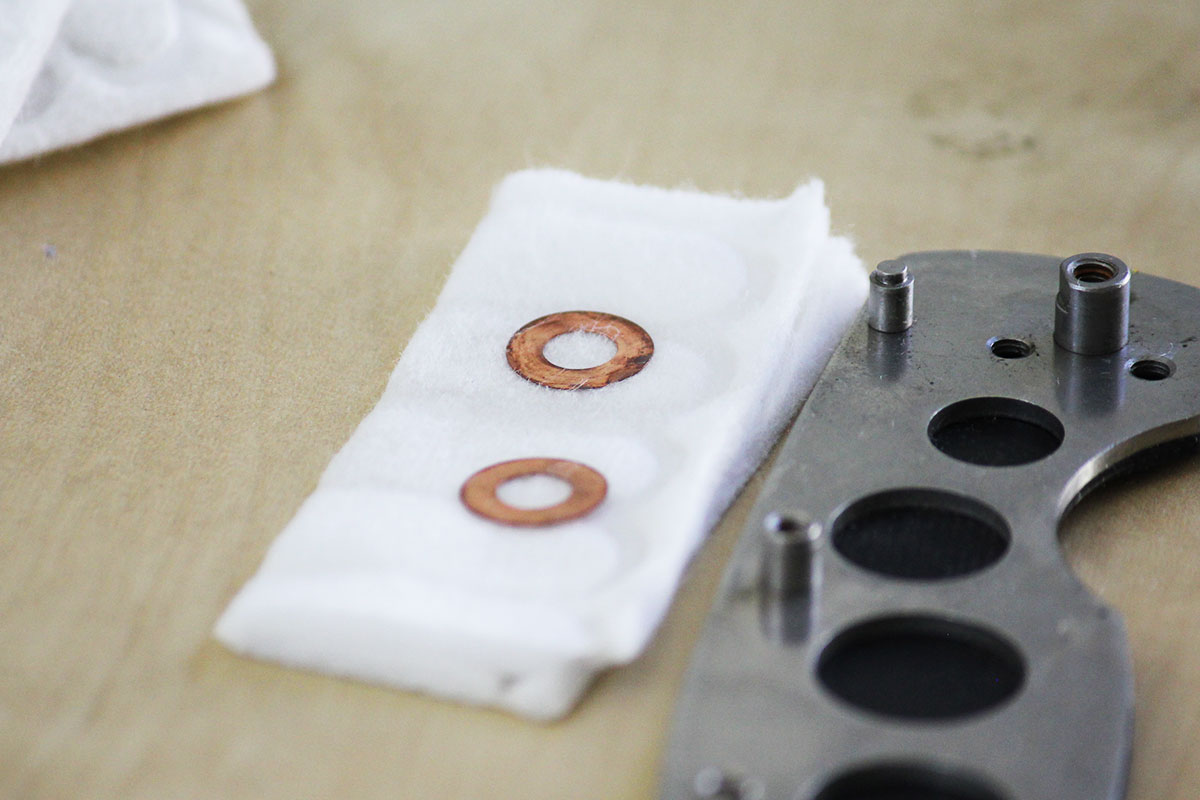
When the inside is thoroughly cleaned, you can start putting things back together. As you do, you can add a little lubrication to the washers for a smooth opening.
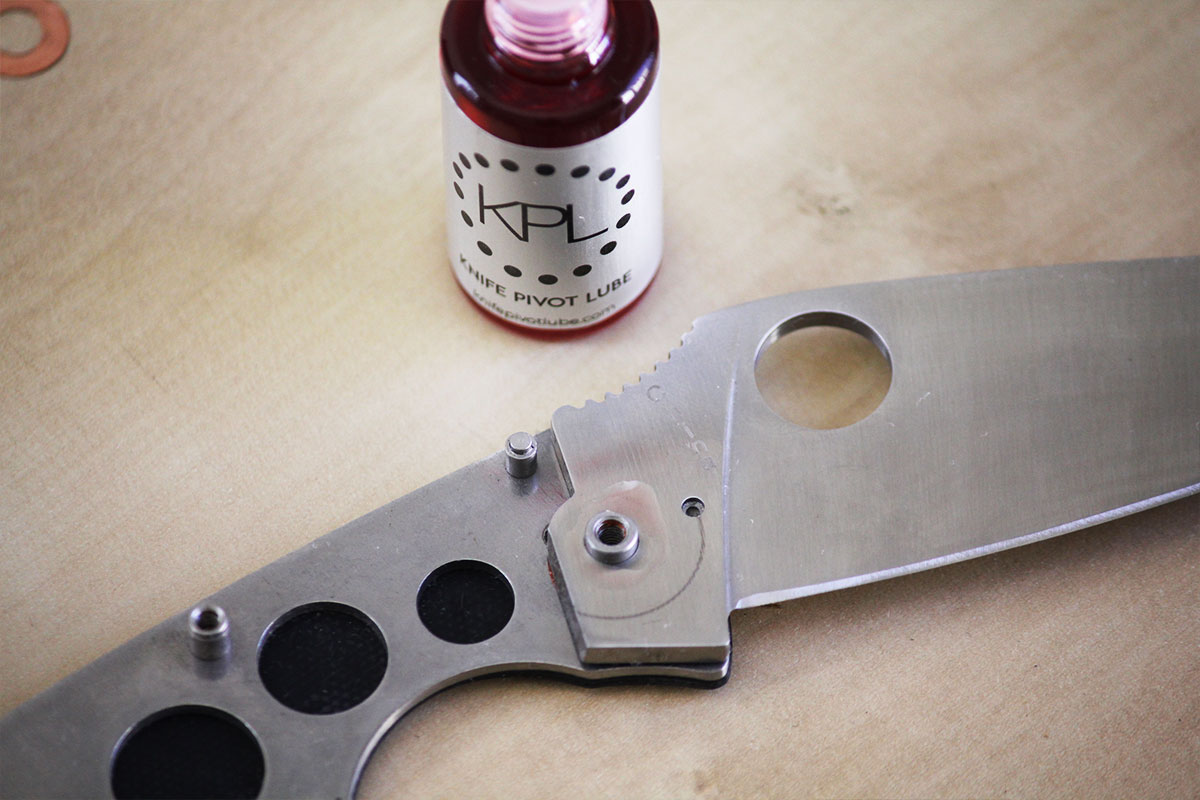
It’s obviously, but make sure all the pieces get put back and in the right places.
You’ll probably have to mess with the pivot tightness to get the right blade centering and action so don’t be alarmed if it’s not perfect when you reassemble it.

Cleaning the Handles
There are a few ways to go about cleaning the handles of a knife. First, it depends on the material. Second, it depends on whether you’re taking it apart. If you take it apart, they’re easier to clean and less likely to hold moisture between the liners and the scales (if that’s the way the knife is constructed).

For most materials — such as G-10, Micarta, steel, and titanium — nothing beats simple warm water, dish soap, and a toothbrush. You can also use this without disassembling the knife, but I would be cautious about using too much water and not letting it get inside the knife.
Wood handles require more work, which you can read a little more about here.
After cleaning, make sure the handles and all the insides are completely dried.
Leave Us Your Tips
As I said earlier, each person has their own tips and suggestions for cleaning and maintaining a knife. Give us your home remedies and suggestions in the comments for others to see.
Also, if you’re a visual person who wants some advice on how to disassemble a specific knife, Nick Shabazz has taken apart and cleaned pretty much every knife out there so take a look at his channel.




October 16, 2018 at 11:02 am
I noted that my Wenger Swiss Army was getting a bit ‘stiff’ about a week ago, left it in soapy water overnight, thoroughly rinsed it out the next morning with hot water, left it to dry on a paper towel and now it seems to work like brand new. BTW it is my edc pocket knife – for about 25 years now so that speaks highly of the materials used. YMMV of course.
October 17, 2018 at 9:40 am
I still miss Wenger (although you can get some Wenger-inspired models from Victorinox). Swiss Army Knives are very hearty. I’ve heard people sticking them in dishwashers for cleaning. I probably wouldn’t do that myself though.
October 16, 2018 at 6:36 pm
First tip is not to use a folding knife for dirty jobs, but instead to have a fixed blade which is easier to clean and has no pivot point, washers or screws to get damaged by trapped dirt and grit.
That being food for thought and a possible solution, I notice that even a folder carried in a pocket can still get lint and such inside it’s handles. I usually go for a Q-tip and alcohol, but sometimes use an old toothbrush to scrub out all the tight spaces and then wash or just rinse, sometimes brushing as well and then flush it with water and wipe again with alcohol to prevent possible rusting if the water doesn’t dry quickly.
One of my worst projects was an old neglected Swiss Army knife that I soaked in apple cider vinegar over night, washed and scrubbed with a toothbrush and then applied WD-40 and wiped clean with a paper towel (I did not have light machine oil, mineral oil or such handy). It was much smoother and the tight, almost impossible to open tools, can now be opened without resorting to pliers or prying up with a screwdriver. The hardest part is getting out the deeply imbedded crud and the rust. I think a small wire brush and a few different toothbrushes (Firmness and shape) would be ideal for cleaning such knives and then following up with alcohol, toothpaste, polishes, soap and water, and a good oil to finish.
October 17, 2018 at 9:39 am
That’s a good approach to the Swiss Army Knife. Underneath the tools can be a big pain to clean.
October 16, 2018 at 6:44 pm
Good piece on A/O’s. Own quite a few myself. Never had a problem. Even MTECH makes a decent one. Nice guide to cleaning your knife. Takes the “scare” out the whole process. By far, the best was the Bob Dylan video! Absolutely AWESOME! Thanks, Everyone.
Bob
October 21, 2018 at 4:58 am
As we learned in the army I just use good hot water with faucet pressure. Next use compressed air to dry complete. Oil as required. Has always worked for me. Yes Sir!
October 22, 2018 at 11:13 am
Warm water works surprisingly well in most situations.
October 21, 2018 at 3:23 pm
When ever I take one of my knives apart I clean and polish the blade under the washers and the washers themselves. A little simichrome metal polish and the washers gleam like a mirror making the pivot even smoother.
October 22, 2018 at 11:13 am
That’s a good tip. Thanks for sharing.
November 18, 2018 at 8:22 am
Is it normal that Kershaws come with more than two washers?
June 4, 2019 at 3:11 am
I don’t know how common it is on kershaws (I would guess it’s a recent model),but it’s becoming a thing lately to use both phosphor bronze and nylon/plastic/whatever in order to get a tight fit without sacrificing smoothness. Careful, though, you can literally ruin these knives by disassembling them.
R.I.P. Rat 1
July 26, 2021 at 12:30 pm
Lots of companies are using bouble washers each side. Spiderco does with holes equal around it to hold lube better
December 28, 2022 at 4:43 am
I like to use Auto-sol to clean my blades. Cleans them up good and leaves them shiny.
December 28, 2022 at 5:59 pm
Went and bought a harbor freight ultrasonic cleaner, water and dawn dish soap. I have cleaned assembled knives, guns, carburetors, and whatever else I could fit in it. Don’t need to worry about rusting because the water gets hot enough to evaporate off. Then just apply oil and you’re done.